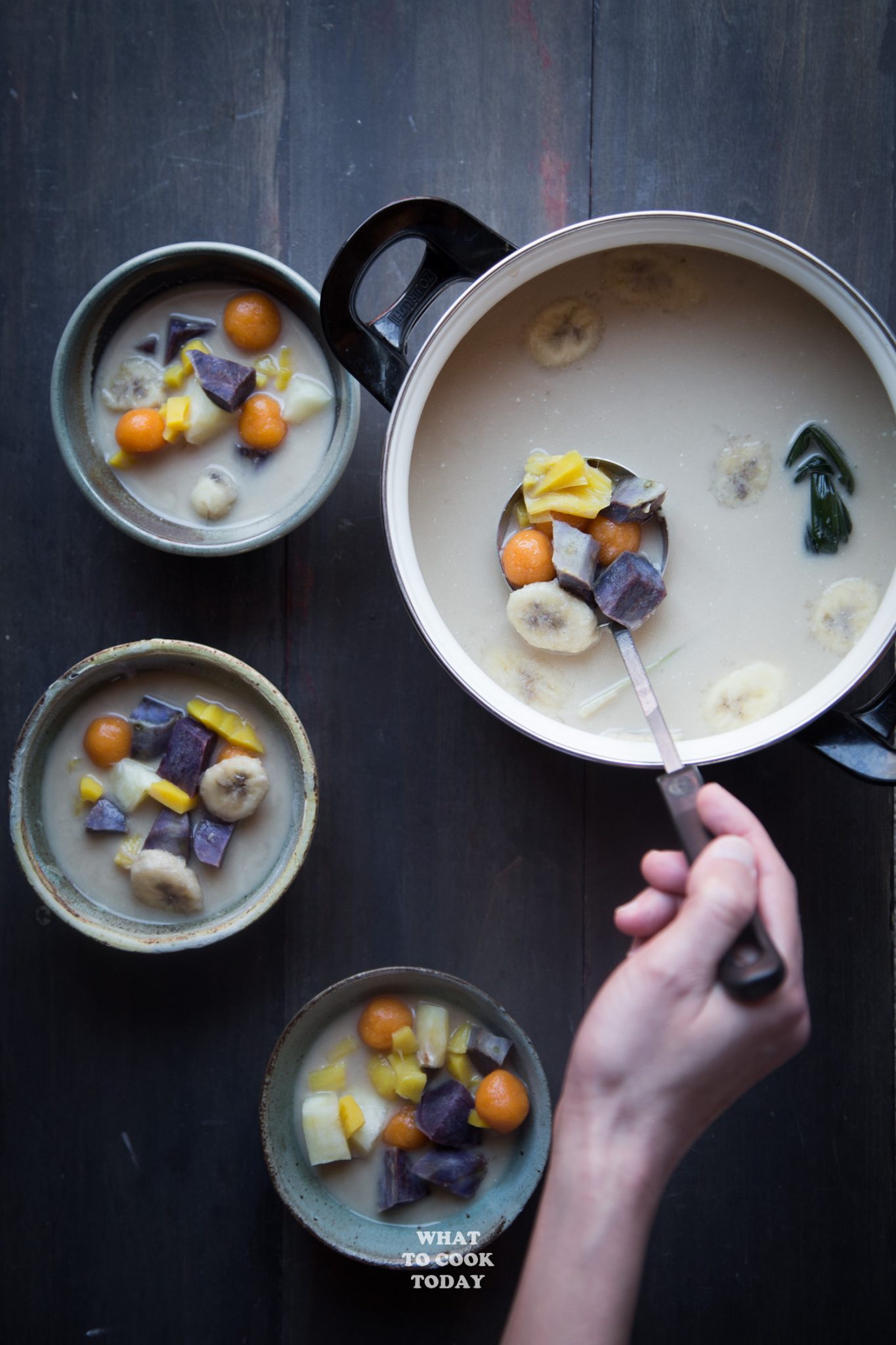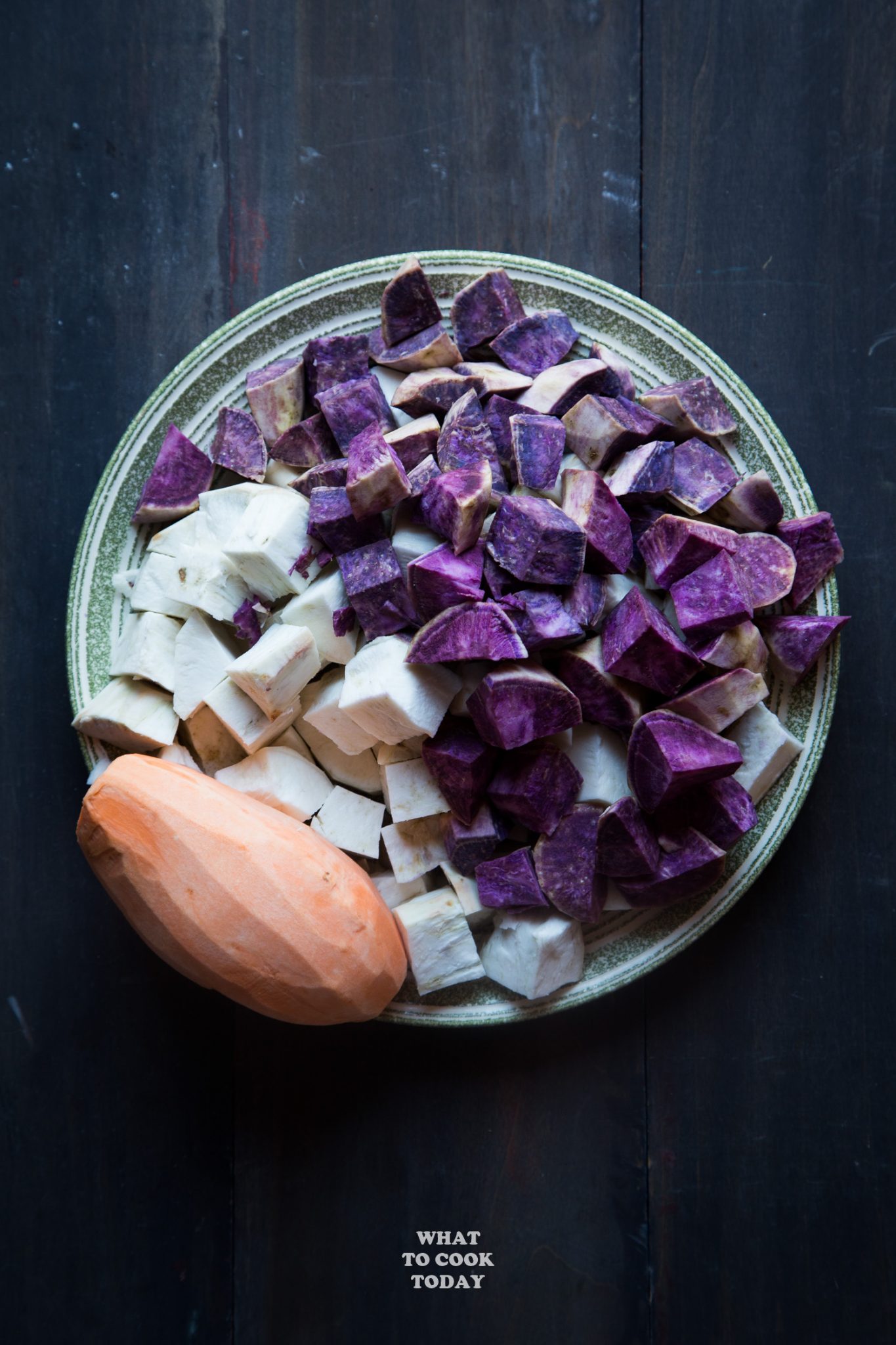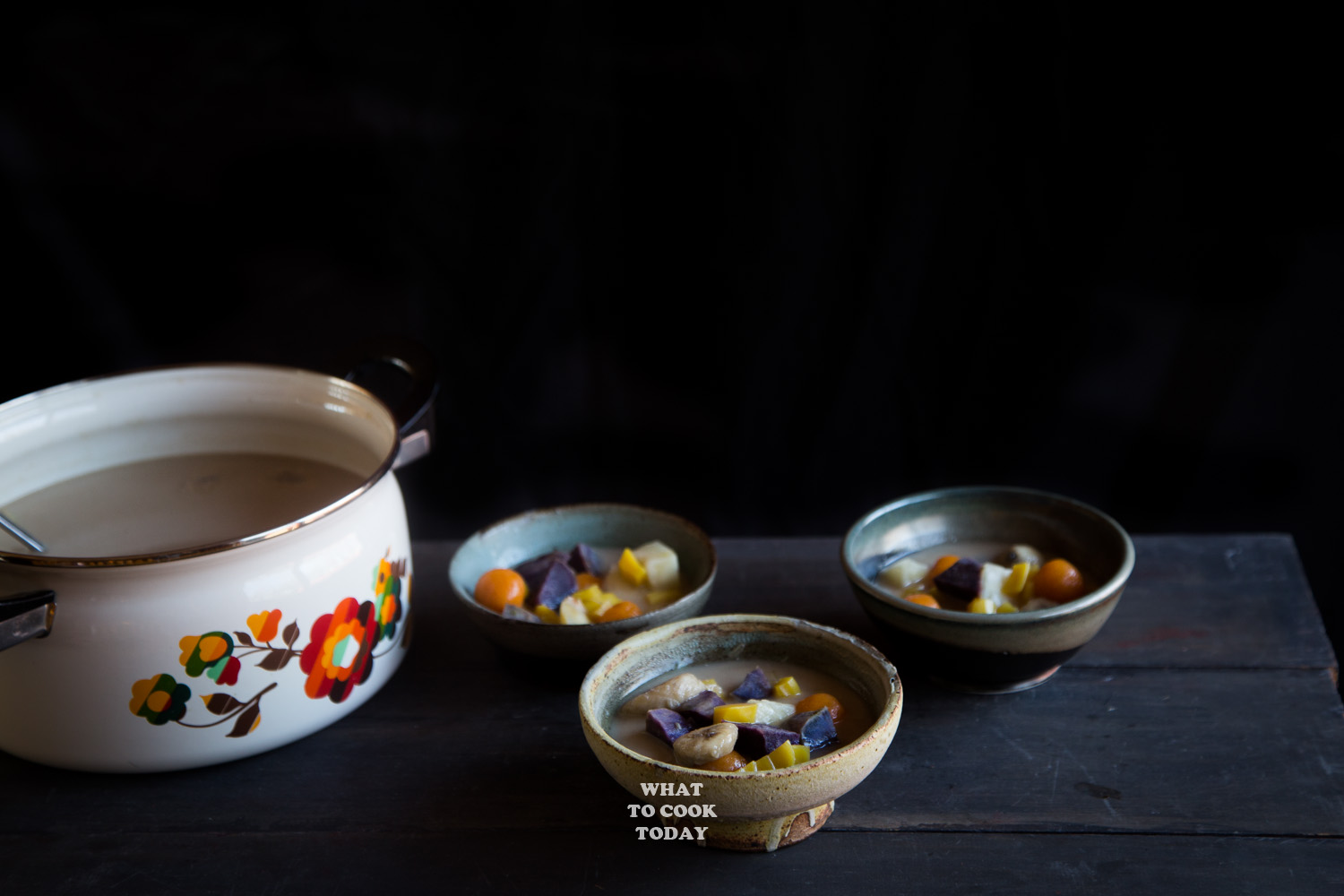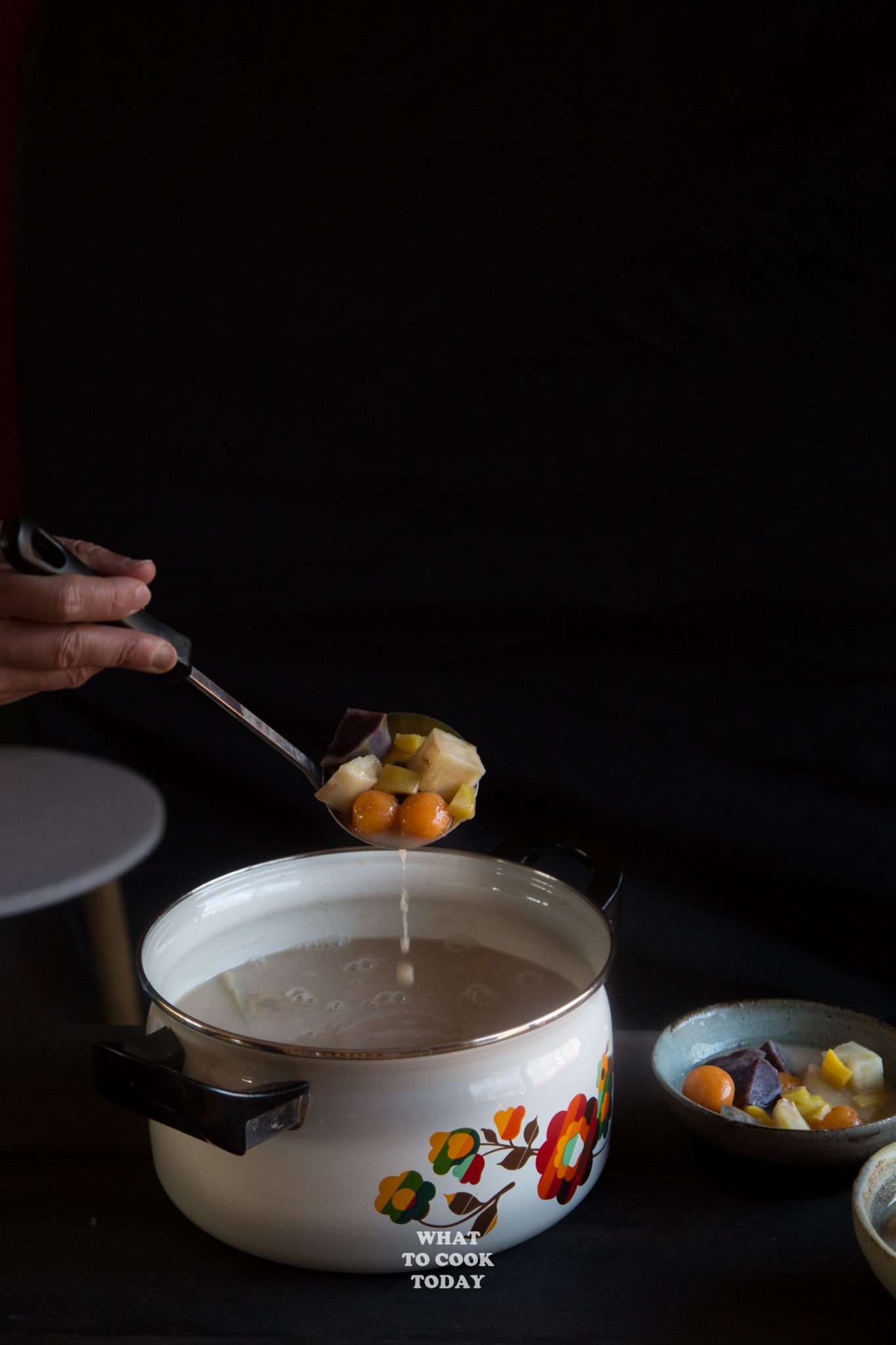This post may contain affiliate links. Please read our disclosure policy.
Kolak Ubi Pisang – Sweet potatoes, cassava, plantain, are served in creamy sweet coconut milk as dessert. Gluten-free and Vegan.

It’s amazing how food can walk you down that memory lane. It’s actually the main reason why I started this blog to begin with. I missed comfort food from home. The familiarity of the food makes you feel close to home. I remember vividly when my mom brought my sister and me to the market, there would be stalls selling dessert like kolak and we always made a stop and have some before continued on strolling the market that day.

I always like mine served cold maybe because of the hot tropical weather we have back at home. They will put some ice in it. Some people like it served warm. It was a fond memory that I can never forget.

Purple Sweet Potato, Tapioca, Sweet Potato

Kolak is an Indonesian-style dessert made with gula Jawa / dark palm sugar, coconut milk, and screw pine leaves (pandan leaves) for flavor. This sweet dessert can be prepared using plantains, sweet potatoes, tapioca roots, and jackfruits. It’s not unusual to add beans or even tapioca pearls. No doubt this is one of my favorite Indonesian desserts.




*This post contains affiliate links, which support this site at no extra cost to you
Kolak Ubi Pisang (Sweet potatoes, cassava, plantain in coconut milk)
Ingredients
- 300 gr peeled cassava/tapioca peeled, cut into bite-sized pieces
- 300 gr purple sweet potato peeled, cut into bite-sized pieces
- 300 gr sweet potatoes peeled, cut into bite-sized pieces
- 6 cups water
- 2 screw pine leaves washed and tied into a knot
- 240 ml coconut cream
- 100 gr palm sugar or sub with brown sugar
- 4 -5 plantains cut into 1-inch slices
- 6 pieces of jackfruit – cut into bite size you can get this in a can
- ½ tsp salt
- ½ recipe of Sweet Potato Dumplings (Biji Salak)
- Small pinch of salt
Instructions
- Prepare a steamer and steam the sweet potatoes, ube, tapioca for 7-10 minutes, or until they are soft when you pierce it with a fork, but not mushy. You may need to do this in batches. Meanwhile, prepare a large pot. Add water and bring to a boil. Add the screwpine leaves and palm sugar and cook until the sugar is melted
- Add the steamed cassava, tapioca, ube and coconut cream. Continue to stir for the next 10 minutes or so, so the coconut milk will not boil over and separate and you will get white patches in your Kolak (not a pretty sight). Remove the screwpine leaves
- Turn off the heat and add in plantains, jackfruits, and the sweet potato dumplings you made earlier. Add a small pinch of salt. Have a taste. It should be sweet and fragrant. If it's not sweet enough for you, add more sugar to your taste if needed. Ready to serve warm or cold
Marv's Recipe Notes
CHECK OUT THESE desserts:
Biji Salak (Sweet Potato Dumplings in Coconut Sauce)
Kue Nagasari (Indonesian Rice Flour Cake with Banana)
Sweet Potato Ginger Soup

8 comments
Can you share the biji salak recipe? Thanks.
I have linked the recipe for biji salak in the recipe card. Sorry I missed that earlier.
Hi Marvellina
I agree… 🙂
One day when I have my children, I hope this legacy can be passed to them.
Hello Marvellina – is that Zojirushi? No wonder it lasted for years and years!
My mom still has it but it is a bit worn out now…. after almost 20 years?
Lucky you!
Ow yes, probably bubur cha cha is almost identical with u cece… I only had once and already forgotten about the taste and everything! Thank you for sharing!
🙂
It’s always great to see some of our childhood memories are brought back – especially when you are not living in Indonesia anymore… 🙁
Yes, Zojirushi! They make good stuff! My rice cooker is also Zojirushi and love that rice cooker!!! I know what you mean…that’s why I try to go back and cook all the stuff that I used to have as a kid, so my kids can have a taste too 🙂
This is a dish which I haven’t tried yet but it seems so finger-licking. Can’t wait to give it a try, Marvellina. 😉
Amazing Recipe! By the way, love your pot – remind me of my childhood!
By the way, there is another dish that looks like kolak – I think it is called U Ce Ce (Hokkian).. Have you heard of this one?
Always in love with your work!
Thank you Linda. Yes, definitely my childhood there! U ce ce it’s actually bubur cha cha I think. They call it bubur cha cha in Singapore and Malaysia. This version of kolak I make very similar to bubur cha cha/ u ce ce because I added the purple yam 🙂 which usually not in kolak. I plan to make bubur cha cha too. Bubur cha cha they usually add sago or tapioca pearl.
The pot was actually “inherited” from my mom ha..ha..! It’s a zojirushi pot that my dad bought long time ago!! She never used it and now I own it ha..ha..